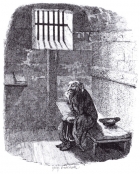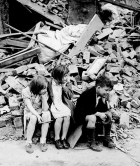Transition KS2-KS3
This section contains examples of projects and advice on securing continuity and progression across the primary-secondary divide. This is the responsibility of both primary and secondary school history teachers. Pupils need to be ready, by the end of Year 6, for history in Year 7, and courses for Year 7 need to build properly on the primary experience. This is extremely challenging because secondary school history teachers have and to take into account (currently very diverse) primary school starting points. Read more
Sort by:
Date (Newest first) | Title A-Z
Show:
All |
Articles |
Podcasts |
Multipage Articles
-

How cruel were the Victorians?
Multipage ArticleClick to view -

Living Museums and Victorian Britain
Multipage ArticleClick to view -

Myths and War Evacuees
Multipage ArticleClick to view -

Key Stage 2-3 History Transition Project Final Report
ArticleClick to view -

It's like they've gone up a year!' Gauging the impact of a history transition unit on teachers of primary and secondary
ArticleClick to view -

Nutshell 121
ArticleClick to view -

Working with Boudicca texts - contemporary, juvenile and scholarly
ArticleClick to view -

Learning to love history: preparation of non-specialist primary teachers to teach history
ArticleClick to view -

Telling and suggesting in the Conwy Valley
ArticleClick to view -

The Evacuee Letter Exchange Project: using audience-centred writing to improve progression from Key Stage 2 to Key Stage 3
ArticleClick to view -

Chata in a Nutshell
ArticleClick to view

